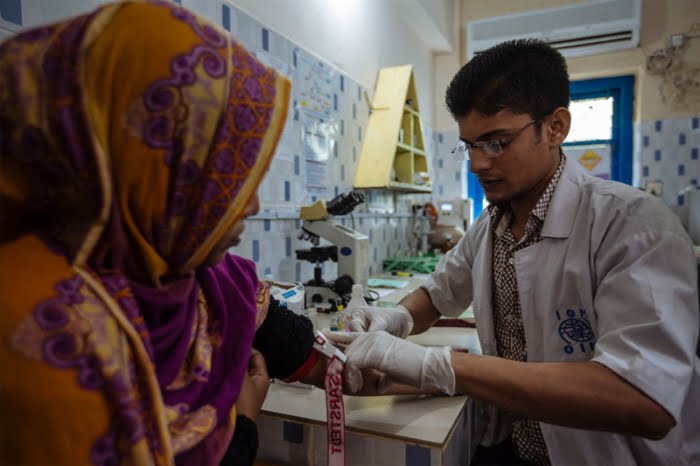Diphtheria was thought to be eradicated in Myanmar several years ago. But the the highly contagious bacterial infection has suddenly appeared in the massive refugee population along the Bangladesh-Myanmar border. So far, at least nine people have been killed and hundreds sickened. The World Health Organization and humanitarian agencies are racing to establish isolation tents where sick patients can receive treatment without infecting others.
Diphtheria caught the humanitarian organizations by surprise. Since it was thought to be eradicated, relief agencies initially did not include the diphtheria vaccine among the suite of vaccines they are administering to these newly arrived refugees, who have fled a campaign of ethnic cleansing in Myanmar to a region of Bangladesh called Cox’s Bazar.
“These cases could be just the tip of the iceberg. This is an extremely vulnerable population with low vaccination coverage, living in conditions that could be a breeding ground for infectious diseases like cholera, measles, rubella, and diphtheria,” said Dr Navaratnasamy Paranietharan, WHO Representative to Bangladesh.
“This is why we have protected more than 700,000 people with the oral cholera vaccine, as well as more than 350,000 children with measles-rubella vaccine in a campaign that ended yesterday. Now we have to deal with diphtheria.”
The International Organization for Migration says that as of December 11, “around 449 probable cases had been identified with nine of these leading to deaths.” The IOM adds that the true number is likely far higher, as victims may confuse this unknown disease with more common illnesses like mumps or the flu.
The resurgence of Diphtheria is yet another example of how refugee crises can cause unintended global emergencies.
Diphtheria has been mostly eradicated around the world. A vaccine was invented in the 1930s, and that sharply reduced the number of infections. (The US Centers for Disease Control says there have been just 5 diphtheria cases in the United States in the last 10 years.) Even in poorer countries in the developing world, public health campaigns have made diphtheria an somewhat rare disease.
But these diseases have a way of re-emerging when massive numbers of people are suddenly uprooted. The scale and pace of the displacement of Rohingyas was the largest and fastest erupting refugee crisis in the last twenty years, since hundreds of thousands of Rwandans quickly fled to neighboring countries at the outset of the 1994 genocide. In this case, over 646,000 Rohingya fled in just a few short weeks, joining other Rohingya who had previously fled Myanmar.
Now, there are some 850,000 refugees living in crowded camps where previously eliminated diseases are suddenly re-appearing.
Listen: The International President of Medicines Sans Frontiers Dr. Joanne Liu joins me on the Global Dispatches podcast to discuss her recent trip to visit health facilities in Cox’s Bazar.
